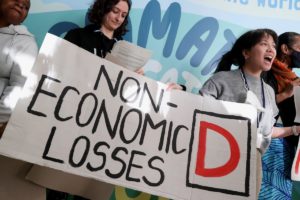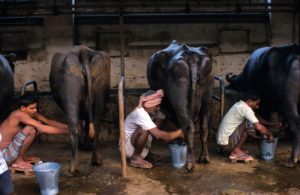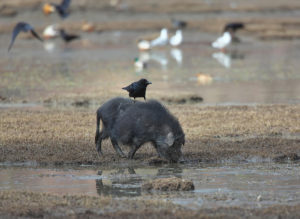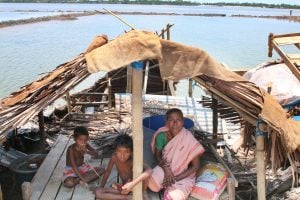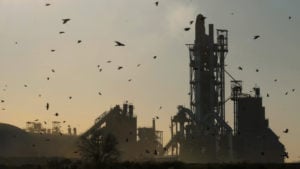Many Asian countries made net-zero pledges at COP26 in Glasgow last month, but most were vague and opaque. The big question is: what now? What will countries have to do to fulfil their climate pledges and what should their governments focus on for climate action in Asia in 2022?
On 14 December, The Third Pole and Earth Journalism Network organised a webinar, bringing together a panel of climate experts to discuss these questions.
India: ‘The government will show direction of travel and lay foundations’
Ulka Kelkar, director of climate programme, World Resources Institute India
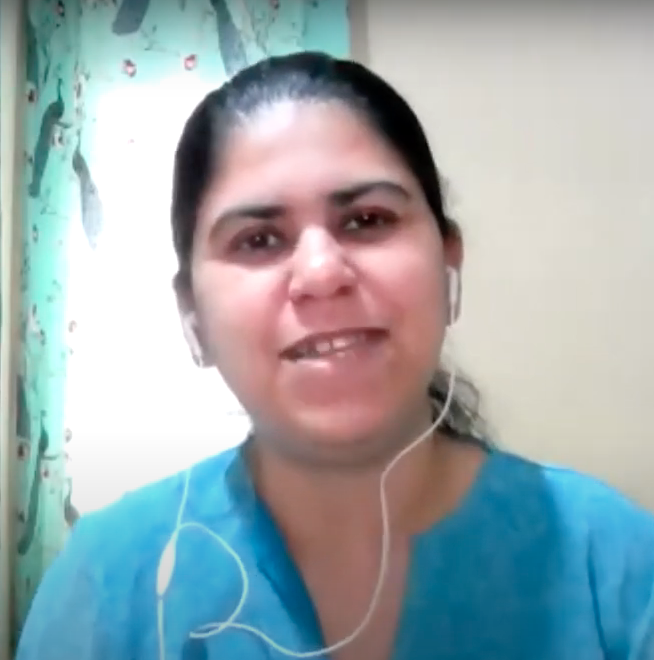
A regional energy grid will be the key to unlocking the potential of renewable energy and using it to generate electricity. For all countries blessed with solar power, regional electricity should be the focus of 2022.
A just transition is the second issue, and it plays out differently in our part of the world. Livelihoods are linked to caste, there is limited mobility and literacy, there are issues with women in the workforce – this is a far more complicated scenario than examples from other parts of the world. We have to come up with our own unique customised solutions [for a] just transition.
Third, we need to learn from our own failures, such as Sri Lanka rolling back on banning imported fertiliser when yields fell and food prices became high. We need to learn from failed experiments in 2022.
Fourth, local planning needs to be at the heart of adaptation planning. When it comes to climate action at this massive scale, it’s bound to have a more positive impact in the aggregate. But at the local level, if there are maladaptive practices, there may be impacts on livelihoods, such as land-based and nature-based livelihoods. We need checks and balances, we need to prevent maladaptive consequences, learn from each other and cooperate with each other.
In India, there is an entire spectrum of carbon-neutral plans being made but there is no role model or template. For example, the city of Mumbai has a climate action plan underway looking at a carbon-neutral future. Bihar state, which has a low carbon footprint, is stepping up and saying, “We would like a low-carbon development pathway.” The national government can foster open discussions so we can mainstream climate considerations into state action plans.
Industry will lead the response by [making] investments and working on supply chains. But the government will have to [ensure] regulatory certainty for industry. This may mean more renewable energy mandates, green hydrogen mandates etc. These are the kinds of signals the government will have to give, because at the scale at which we are talking about these targets, market forces alone will not get us there.
Even though renewable energy is becoming more competitive than coal, things such as land will be a big constraint, as will mineral security for battery storage. Finance, too, will be a big constraint.
Central Asia: ‘Civil society and media key to making countries stick to commitments’
Olha Boiko, coordinator, Climate Action Network, Eastern Europe, Caucasus and Central Asia
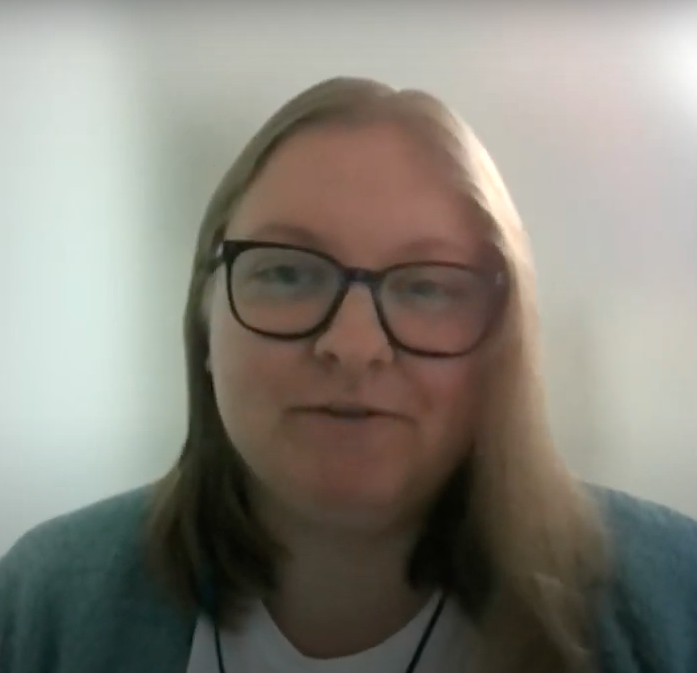
Kazakhstan has not updated its Nationally Determined Contribution (NDC) since 2016, though it plans to go climate neutral by 2060. As far as expectations for Kazakhstan go, an updated NDC is highly unlikely but at least there is an announcement for an action plan for a climate-neutrality strategy by 2060. We really need to focus on civil society participation and local level participation because it’s impossible to create a just transition strategy without consulting stakeholders.
Kyrgyzstan has been quite ambitious compared with other countries in Central Asia. Its emissions are ridiculously small, so the country is mostly focused on vulnerability and adaptation. However, it uses coal to heat houses. It updated its NDC, and the process was coordinated with civil society organisations who gathered information from local communities and passed it on to committees.
Kyrgyzstan cautiously mentioned climate neutrality by 2050 during COP26, but it’s significant it did mention it. We expect new NDC implementation, more action on the international level as civil society grows stronger, more studies on alternatives to burning coal in homes, and for Kyrgyzstan to join the Climate Vulnerable Forum – which is a good way of teaming up with similar countries who are vulnerable and raising their voices.
Tajikistan has weak civil society influence and is highly vulnerable to climate change, especially when it comes to water. The focus is on hydropower as the main renewable – a dangerous situation as Tajikistan already lacks water. We expect more action at the local level, more local communities using sustainable solutions and stronger communication from civil society. The government will engage on the regional level, with new capacity building and adaptation projects from international donors.
Uzbekistan updated its NDC, which has good content and good suggestions. A carbon tax will be introduced. It is difficult for civil society to function and influence processes here. What to expect: NDC implementation, including supporting civil society and improving journalists’ capacity to write independently about what is happening. Our role is to ensure there is a civil society presence and independent media so countries deliver what they promised.
Nepal: ‘Despite our low emissions, we want to be part of the solution’
Manjeet Dhakal, South Asia lead, Climate Analytics Nepal

The year 2022 will be crucial for Nepal. Nepal will graduate from LDC status [with the preparatory period of five years, Nepal will graduate to a developing country by December 2026] without meeting the income criteria. However, there is a challenge to retain this status because of the extreme effects of climate change and economic vulnerability.
2022 will be important for Nepal to prepare a smooth transition for graduation while addressing the compounding crisis that the country has faced in terms of Covid-19 and climate disasters.
In our updated NDC, we have included a quantitative greenhouse gas reduction target on the energy sector and other sectors; we have also included the total cost of implementing the NDC, which amounts to USD 28 billion in 10 years. The country has pledged to mobilise USD 3 billion. This shows that despite low emissions we want to be part of the solution.
The year 2022 will be important to build infrastructure for this transition and work needs to be done for technological breakthroughs and subsidies.
Pakistan: ‘Holistic implementation contingent on climate awareness’
Sara Hayat, climate lawyer and consultant

Pakistan has taken an ambitious pledge. It did not pledge net zero but planned to curb emissions by 50% by 2030, with 15% of this through internal efforts and the remainder contingent on international funding. With regard to implementation, the government has taken it head on, as it is holding various workshops in the country and inviting members of civil society to work alongside government officials.
In the short term, the government hopes to shift to 60% renewable energy by 2030, put a moratorium on new coal plants and allow no generation through imported coal. Still, Pakistan hasn’t let go of coal power, but does intend to by shifting to hydro and solar. It’s strongly focusing on the electric vehicle policy, pledging to shift to about 30% electric vehicles by 2030. It’s preparing its national adaptation plan, which promises to be gender-sensitive, youth-focused – a big leap forward. Though the Ten Billion Trees Tsunami [an afforestation programme] is making waves and the government is focused on channelling funding for it, one would hope that there is more work on the mitigation side as well.
Most of the adaptation is happening in small pockets.
Small measures are being taken to tackle smog, for example, giving subsidies to farmers so they don’t burn crops[sic], or shifting brick kilns to zigzag technology so there are less emissions or buffered emissions. On Mondays, schools and private offices are closed to reduce vehicular emissions, and the government is shifting to Euro V petrol which reduces pollution.
Whether these efforts come together holistically is contingent upon whether there is enough climate awareness. Policies lose impact if awareness does not take place. In Pakistan, this awareness is devolved to civil society and NGOs.
Overall, given other strains on the economy and post-pandemic effect, as well as large and uneducated population, making climate change a priority is a big thing for this government.
Indonesia: ‘Green recovery needed after Covid-19’
Agus Sari, chief executive, Landscape Indonesia

Indonesia is going through a great reset post pandemic. The focus now is on how the post Covid-19 recovery can be low carbon.
We do have a strong NDC, which offers a detailed roadmap on how to get there. From about 2.8 gigatonnes of CO2 equivalent emissions, we have to limit it to 2 gigatonnes with our own resources and to 1.8 gigatonnes with international support. We are doing a lot with our own resources. On average, USD 800-900 million per year is spent on climate change out of the national budget.
We have a net-zero pledge, by 2060 or earlier.
The forestry commitment in the NDC is ambitious, setting a target of a 70% reduction of emissions by 2030 with local financing and 90% reduction with international support.
Indonesia has committed to making the forestry sector a net carbon sink by 2030. In 2022, Indonesia will chair the G20, so there is pressure on it to perform on commitments and show progress. Climate ambitions will be reviewed – that was one of the decisions of COP26.
We already have a carbon tax. The tax needs to be at market level if not more. Both tax and carbon trading will begin with coal power plants.
The energy sector is more difficult to deal with as we are very coal-intensive: 66% of our electricity generation comes from coal, 30% or less from oil and a tiny 10% from renewable energy. This needs to be increased. We have the target to increase renewable energy to 21% by 2050 which doesn’t sound like much unless you see where we are starting from.
The president wants a roadmap for energy transition, he has made it sound like we are in urgent need of a good transition plan. He has talked to two of the largest state-owned electricity and oil companies to abandon coal and carbon-intensive technologies and embrace RE.
There is now a dual mandate of increasing production and decreasing emissions.
Bangladesh: ‘Government is guided by the scientific community’
Dr Atiq Rahman, executive director, Bangladesh Centre for Advanced Studies
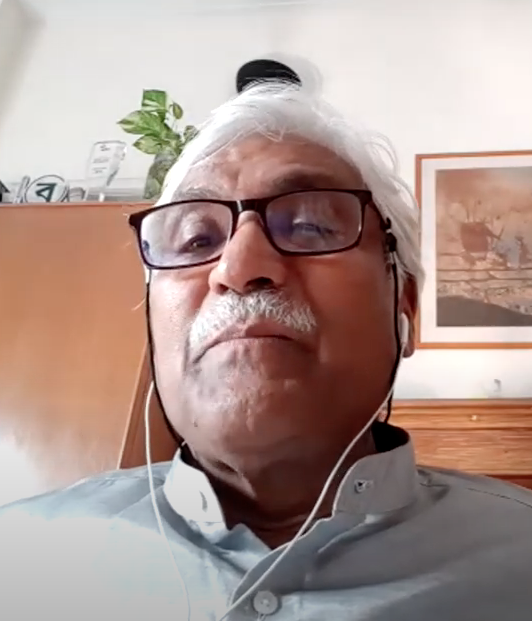
The Bangladesh government has been quite open, progressive and interactive in terms of decisions for climate action. The local scientific community is interacting with the international scientific community, and NGOs and civil society groups are strong. The government has various committees in which many of these people are represented. Of course, the government has the last word, but it is often the language of this scientific community that is reflected in decisions.
With a rapidly growing population, the demand for crop production is growing. Food self-sufficiency is the national target and we have more or less achieved that with respect to rice, which is the main food. The threat of starvation isn’t there. Our forecast and prediction of extreme events has improved.



